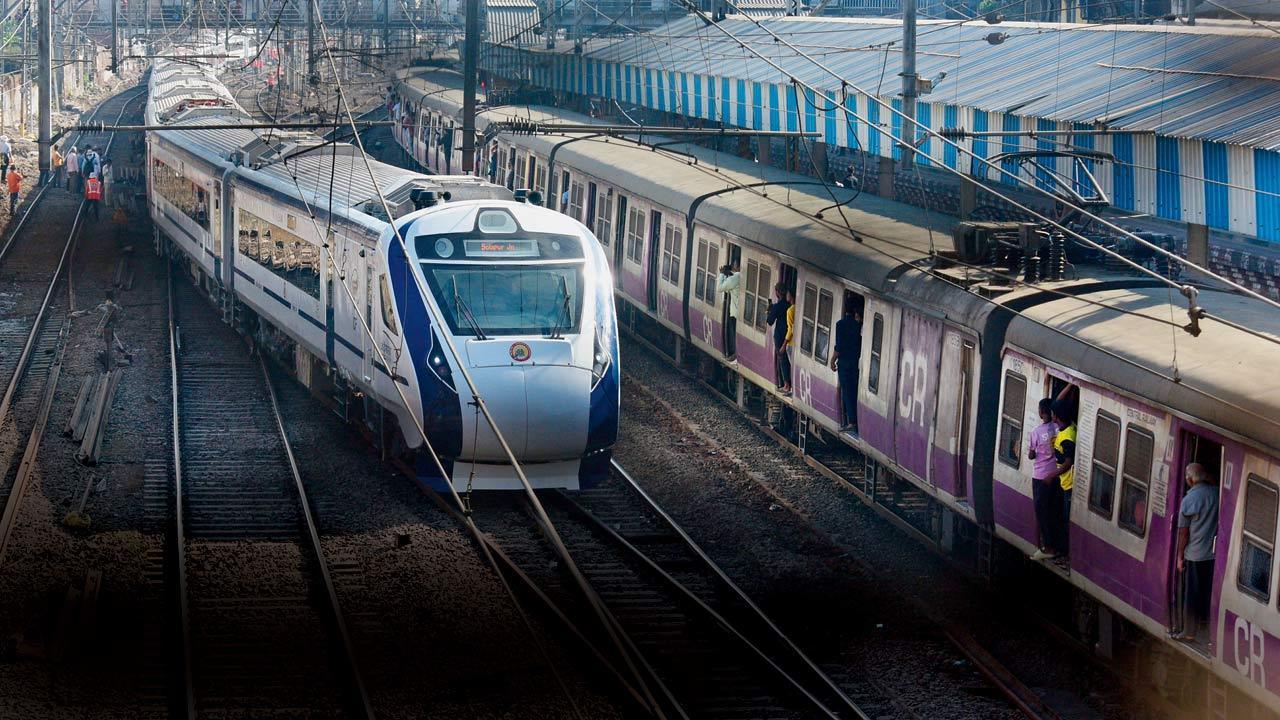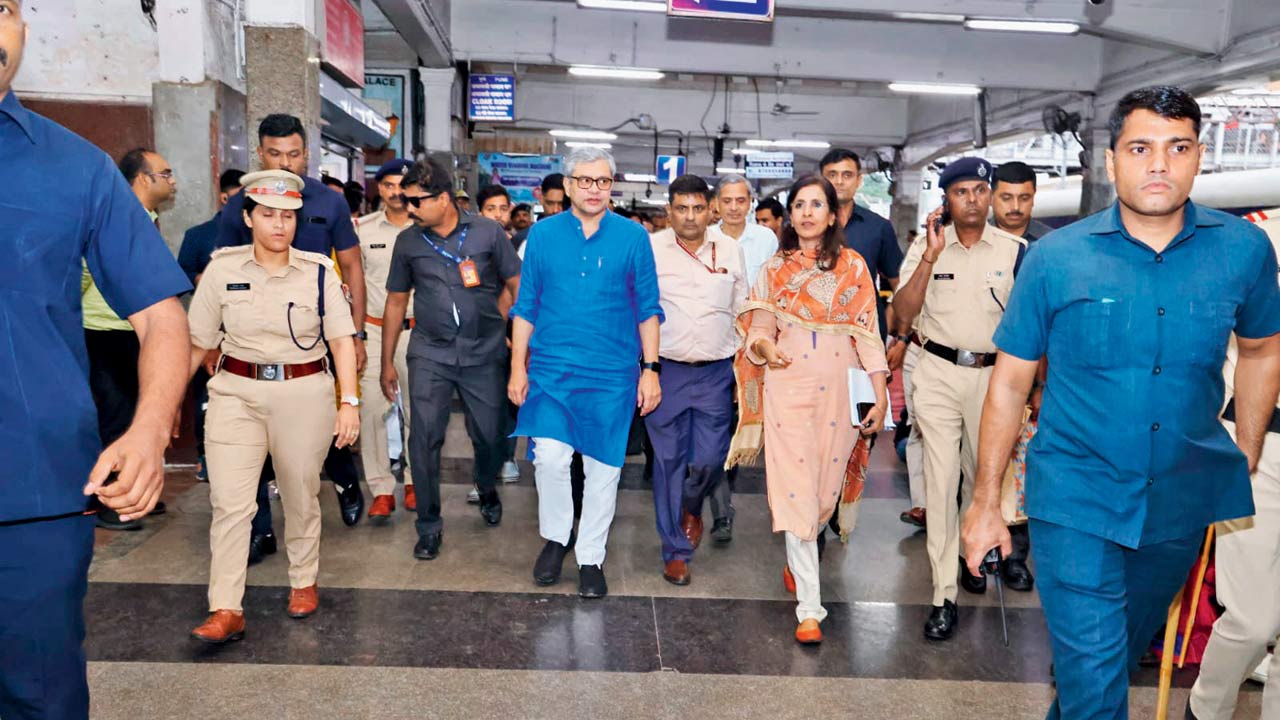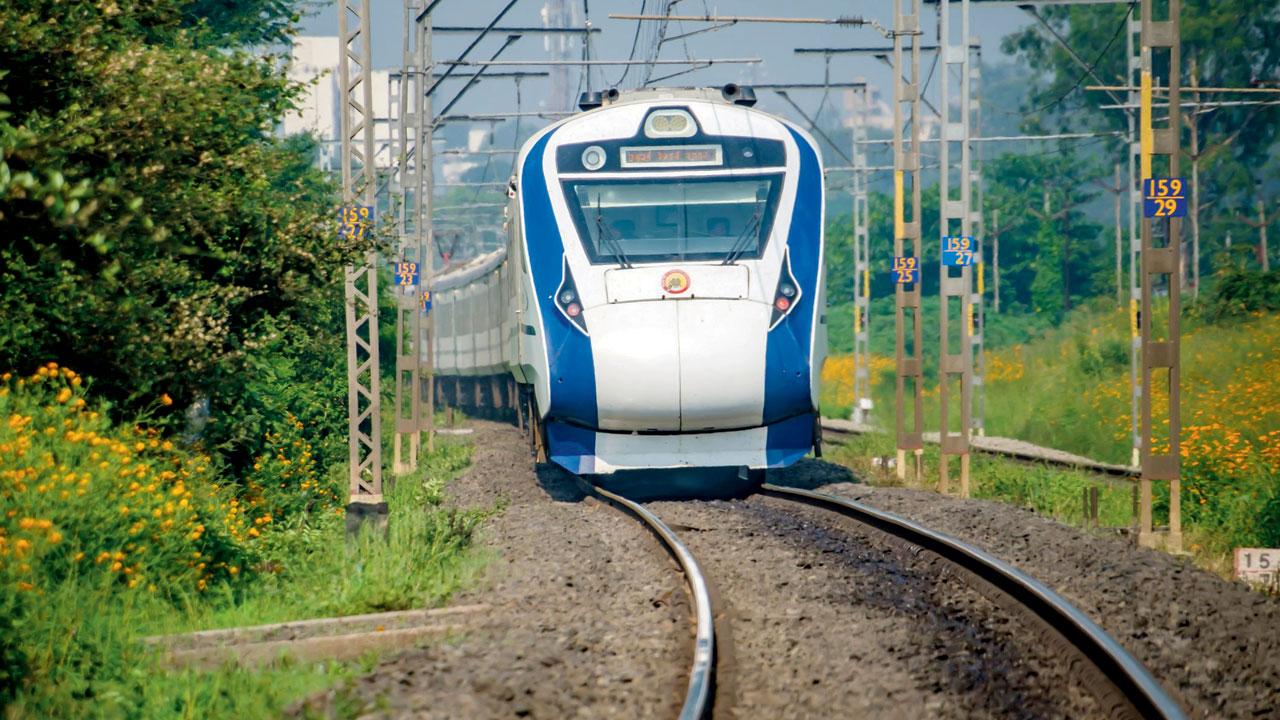Rail minister gives green signal for new alignment with gentler slopes, which while being longer, will reduce travel time between the two cities

A Vande Bharat train at Chhatrapati Shivaji Maharaj Terminus. Pic/Satej Shinde
For the first time in 160 years, a plan for a new rail alignment between Mumbai and Pune to bypass the existing steep ghats and 28 tunnels received the go-ahead last weekend. Calling it the simpler inclines of 1/100 ‘Sreedharan grade,’ Railway Minister Ashwini Vaishnaw has asked Central Railway to work on it expeditiously. The minister took a ride onboard a three-coach special inspection train with a halt at Lonavala and examined the process of navigating ghats and the operation of banker locomotives.
ADVERTISEMENT

Union Railway Minister Ashwini Vaishnaw at Pune station on Saturday
Banker locomotives, essential for navigating steep gradients like those at Bhor and Thal Ghat, push trains uphill and help control them downhill. The current gradient of 1:37 necessitates their use, while the new plan, with a gradient of 1:100, aims to eliminate the need for these locomotives, potentially speeding up travel times between Mumbai and Pune.
Banker locomotives are powered engines attached to the back of the train to push it during the uphill climb and to stop it from losing control during the downhill stretch. This is necessary as the inclines at Bhor in the Pune direction and Thal Ghat in the Nashik direction have a gradient of 1:37, which means there is a one-metre rise for every 37 metres. The Train 18 Vande Bharat is the only train that can negotiate these ghats without any locomotives. The Mumbai CSMT-Rajdhani Express is the other train that does this, but it has an engine on either side of the train.

The Solapur-Mumbai Vande Bharat Express heading towards Mumbai, near Pune. Representation pic
“At present, the ghat section between Mumbai and Pune has a gradient of 1:37, due to which trains require banker locomotives. To solve this problem, we have been working for the past two years, and a new alignment has been thought of as a solution which will have a gradient of 1:100. We have conducted a long and detailed exercise on this. I have inspected the alignment, and I think the solution that has been worked out is very feasible and can be taken ahead. I have now given the sanction and go-ahead for it. The next step will be to make a Detailed Project Report of the entire plan, convert it into a project, and prepare it for formal approvals. It is a lengthy process but will prove to be a long-term solution to the problem and bring the two cities closer together,” Vaishnaw said.
Legendary railway engineer and Padma awardee E. Sreedharan, known for building the Konkan Railway, Delhi Metro, and several key railway engineering projects, told mid-day that a “1/100 gradient was doable in the ghat section.”
Travel time reduction
On the roads side, the missing link project of the Mumbai-Pune Expressway, undertaken by the Maharashtra State Road Development Corporation (MSRDC), will be operational by May 2025. The length of the existing Mumbai-Pune Expressway section from Khopoli exit to Sinhgad Institute is presently 19 km. This distance will be reduced to 13.3 km after the construction of this new missing link. Therefore, the total length of the Expressway from Mumbai to Pune will be decreased by 6 km. Travel time will be reduced by 20-25 minutes.
Pune-Lonavala 3rd, 4th Line
In addition to the new alignment, Vaishnaw also approved a proposal for the construction of a third and fourth line between Pune and Lonavala. Currently, the Pune-Lonavala section is a 63.84 km double-line electrified route. Since land is available on the UP side of the existing double line, the proposal is to build the third and fourth lines on this UP side to minimise land acquisition. This will also facilitate the integration of future lines, such as the Pune-Nasik line, which will also be situated on the UP side of the present Pune-Lonavala double line.
What is known so far
The proposed alignment starts near Karjat station at the Mumbai end and extends to Talegaon station near the Pune end. It will be a double-electrified line. Although it will involve a longer detour of about 20 km, it is expected to be a faster route than the existing mainline. This is because it will eliminate the need for attaching and detaching banker locomotives and the related delays. However, the alignment plan is still in the preliminary stages and needs to be formalised with actual measurements and figures. Once finalised, it will provide commuters between Mumbai and Pune with a more seamless journey, potentially saving 10 to 20 minutes overall due to reduced delays and speed restrictions currently imposed by the banking locomotive operations and cautious speed on gradients.
 Subscribe today by clicking the link and stay updated with the latest news!" Click here!
Subscribe today by clicking the link and stay updated with the latest news!" Click here!







